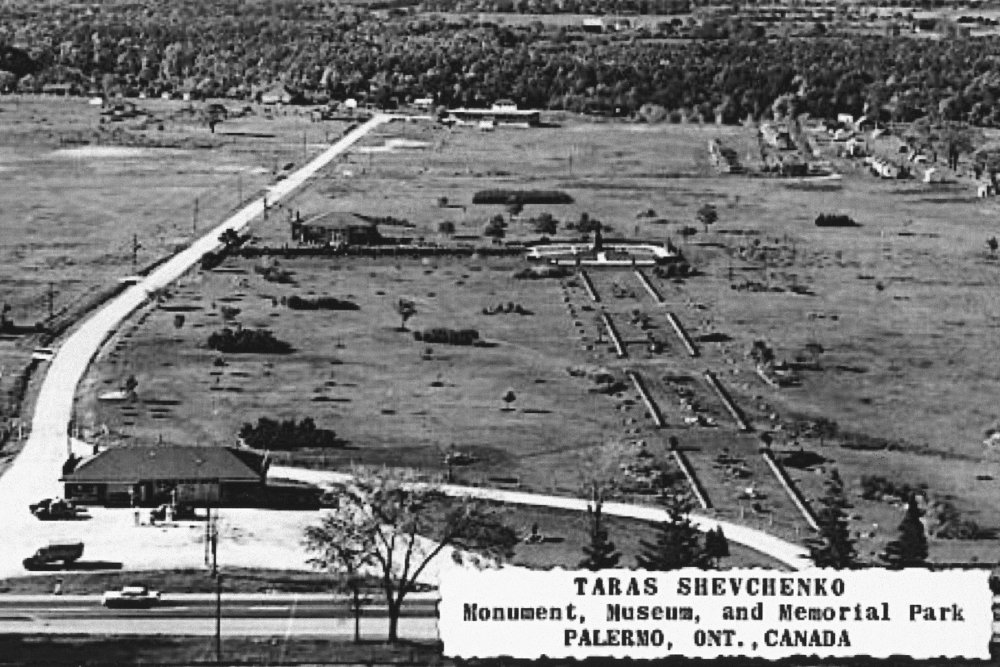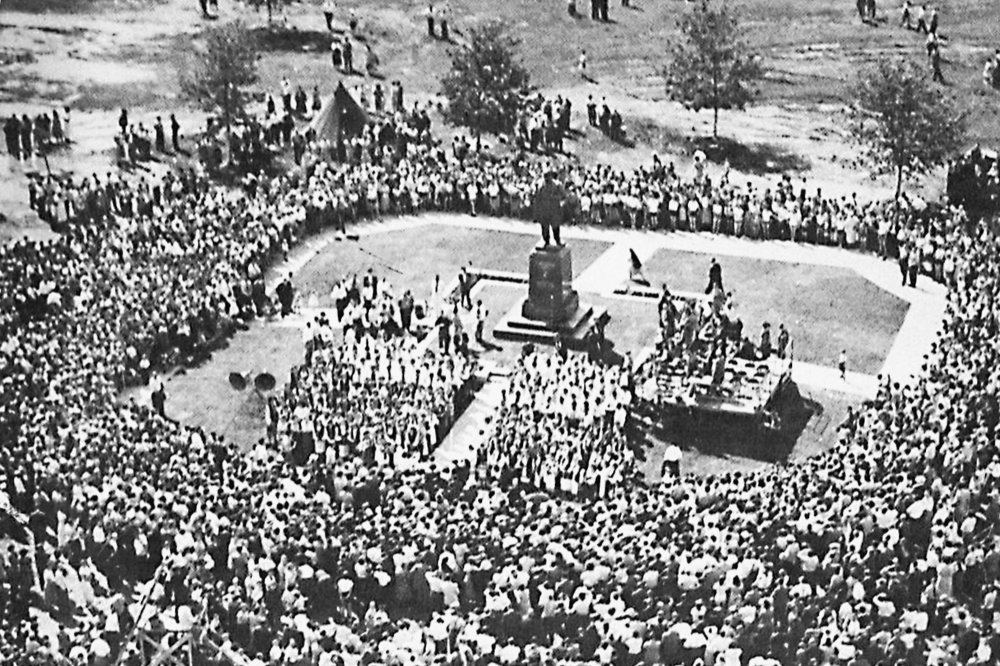
About
The Shevchenko Museum, owned and operated by the Taras H. Shevchenko Museum and Memorial Park Foundation, is a not-for-profit institution, founded by the Association of United Ukrainian Canadians for the purpose of popularizing the life and work of Taras Shevchenko and the contribution of Canadians of Ukrainian descent to the social, economic, and cultural life of Canada.
History
In 1947, the Association of United Ukrainian Canadians purchased a 120-acre plot of land on Highway #5 west of Oakville, Ontario, near the village of Palermo, with the intention of building a summer camp.
In 1950, to celebrate the 60th anniversary of Ukrainian immigration to Canada, the Association began plans to hold a national festival of song, music and dance, and to establish, on that land, a monument to the great Ukrainian poet and artist Taras Shevchenko.
Later that year, following a request submitted to Ukraine, a gigantic 10- foot, 8-inch-high bronze figure weighing 51 metric tons with a 10-foot, 3-inch-high granite pedestal, in 121 pieces, arrived. The monument, which was created by Ukrainian sculptors Oleksa Oliynyk and Makar Vronsky, was then assembled at Shevchenko Memorial Park by brothers Max and Stanley Ilomaki, together with many volunteers.
To cover the costs of erecting the monument and developing the memorial park, a Canada-wide fund-raising campaign was conducted. The response was so generous that it allowed for plans to build a museum adjacent to the monument to house exhibits representing the life, creative work and legacy of Taras Shevchenko, and to reflect the history of Ukrainian settlement in Canada.
The appeal resulted in the publication of numerous articles on Shevchenko’s works and legacy, meetings, lectures and conferences, as well as reminiscences by Ukrainian-Canadian pioneers. For the first time, many Ukrainian Canadians learned about the richness of their heritage, and realised the importance of their contributions to the socio-economic and cultural-political life of Canada.
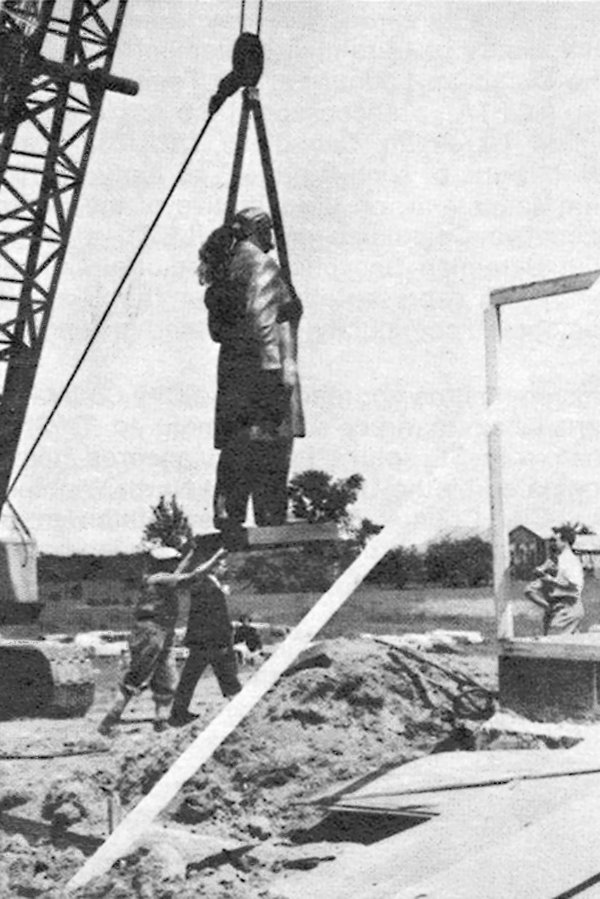
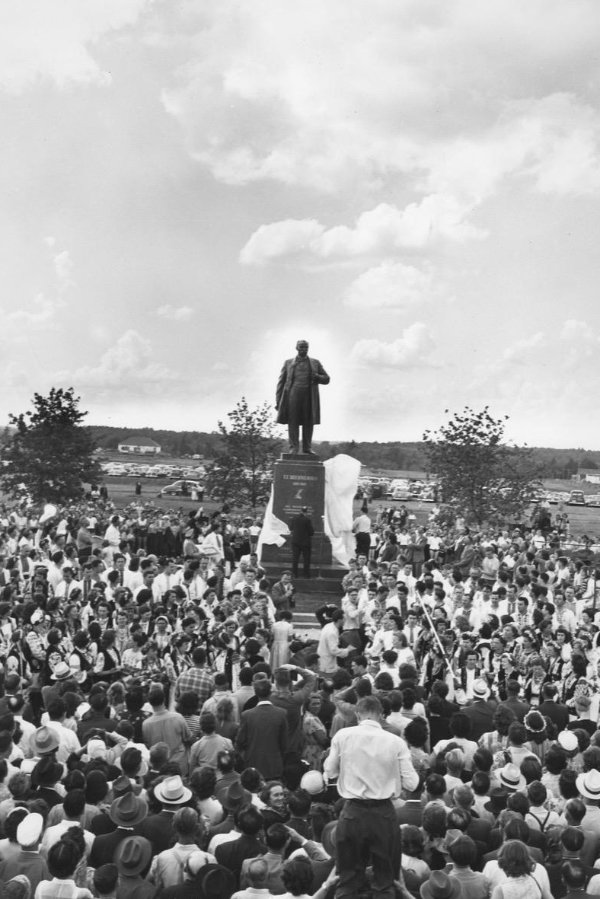
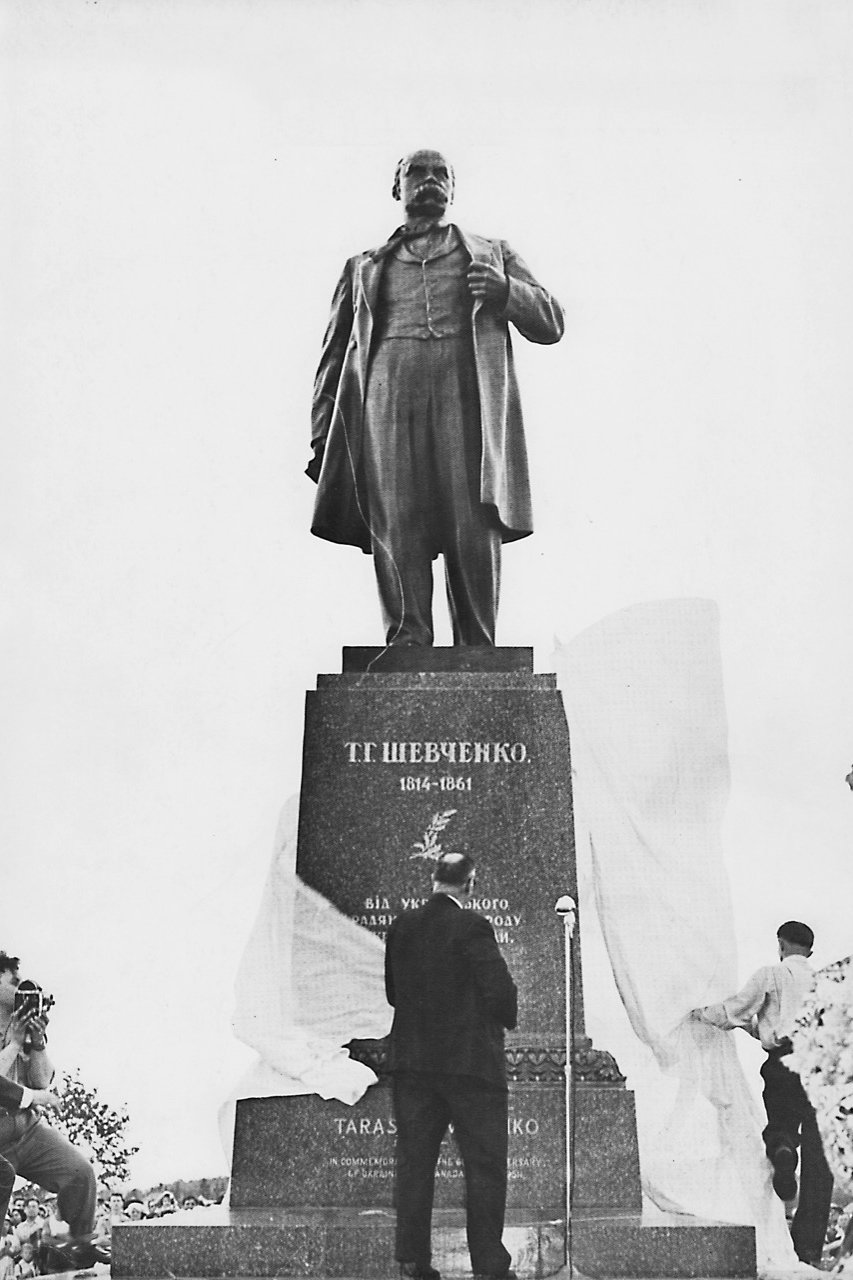
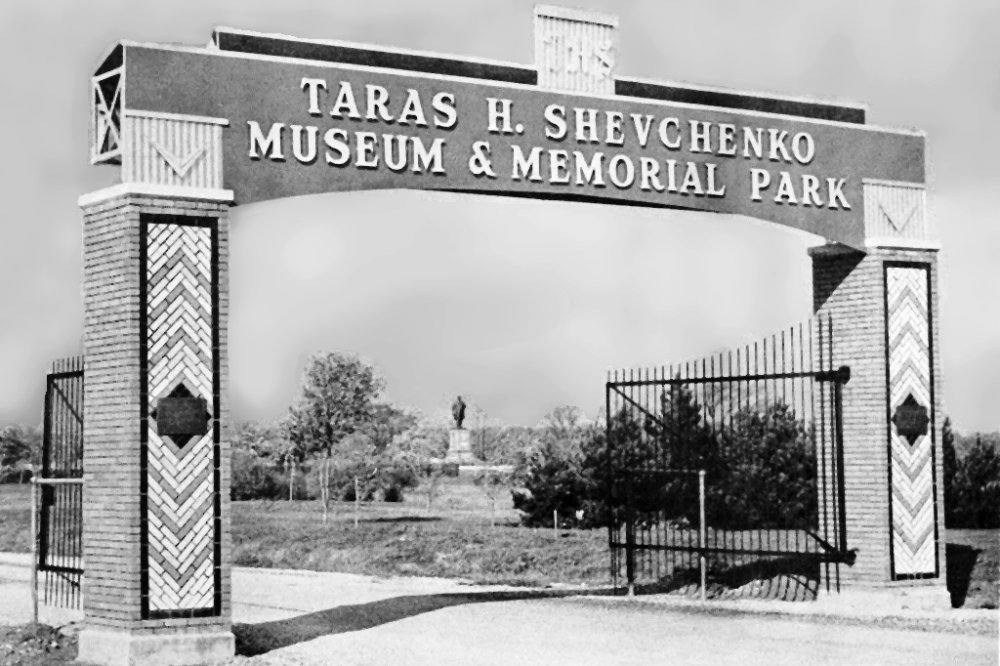
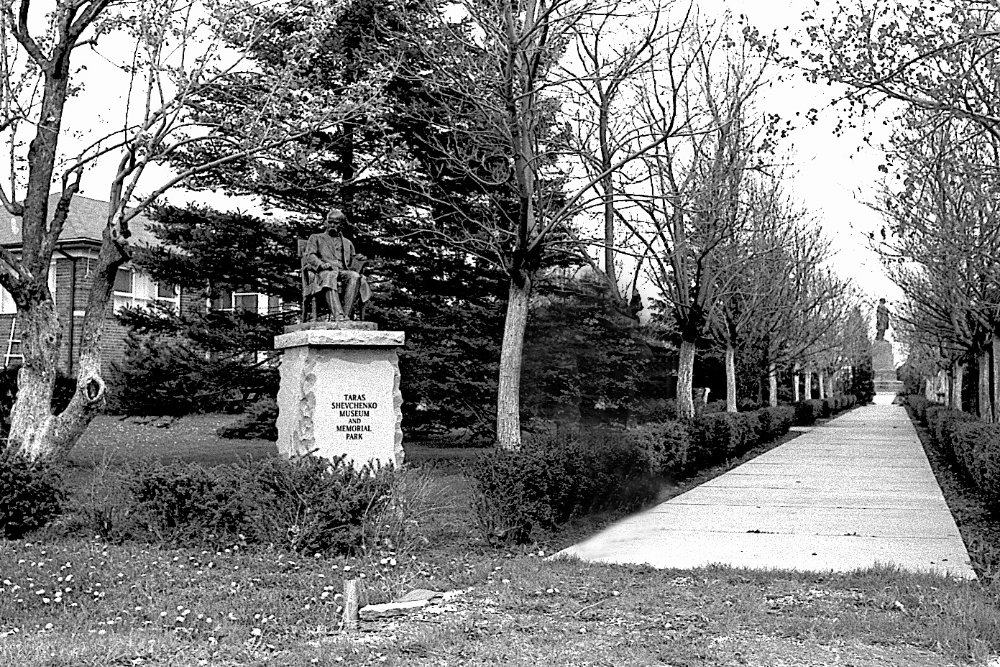
On June 30, 1951, the 60th-anniversary celebrations were launched with a concert at Maple Leaf Gardens, staged by 1500 performers, followed the next day, Canada Day, by the unveiling of the monument at Shevchenko Memorial Park. The second event drew a crowd of approximately 45000.
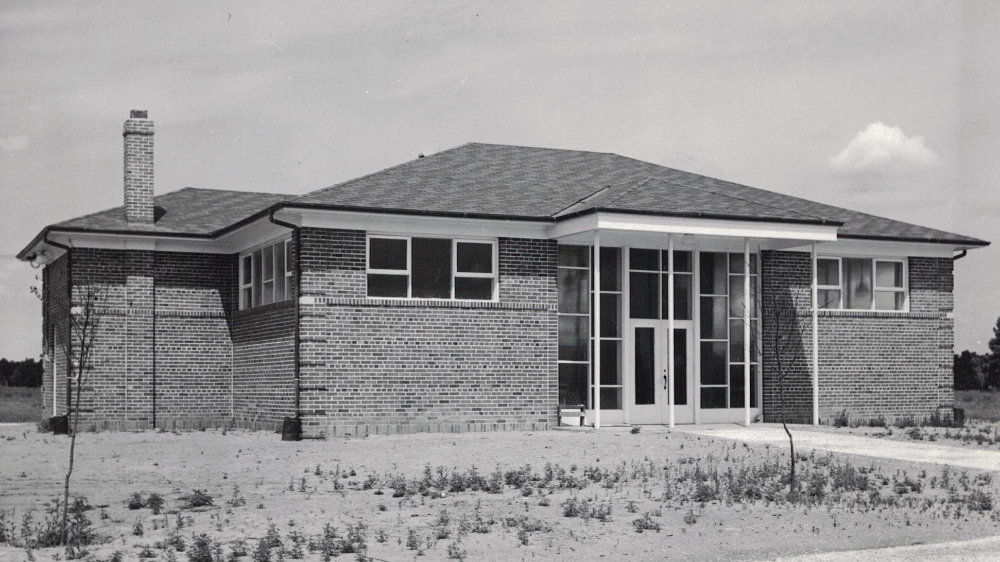
Within a year, the building of the Museum was complete, and the surrounding farmland was transformed into a park with the planting of 600 young trees and the sowing of 500 pounds of grass seed. On Canada Day, 1952, the Taras Shevchenko Museum celebrated its official opening.
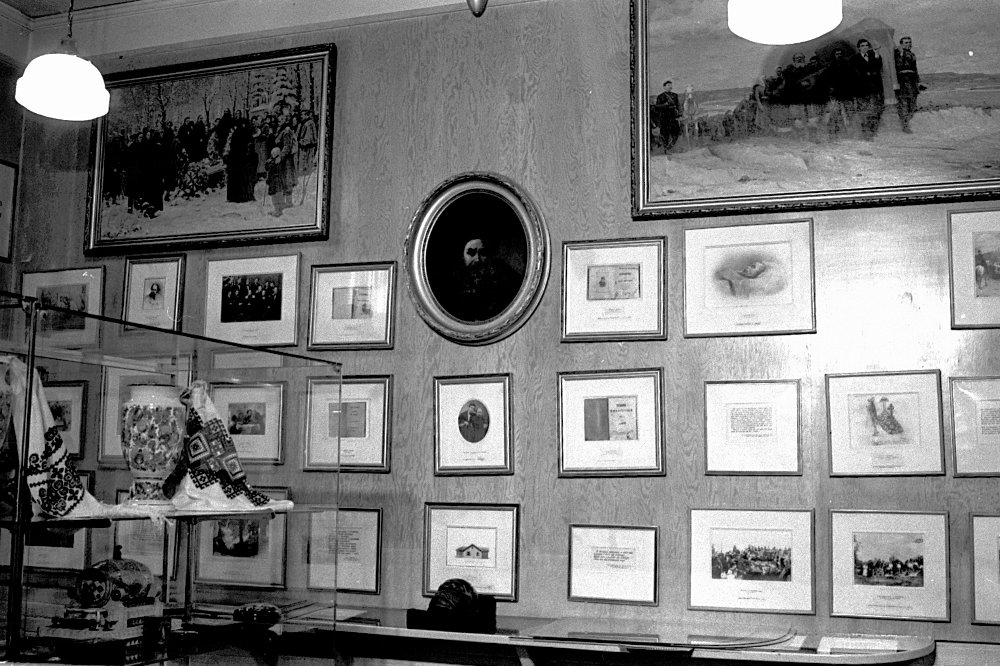
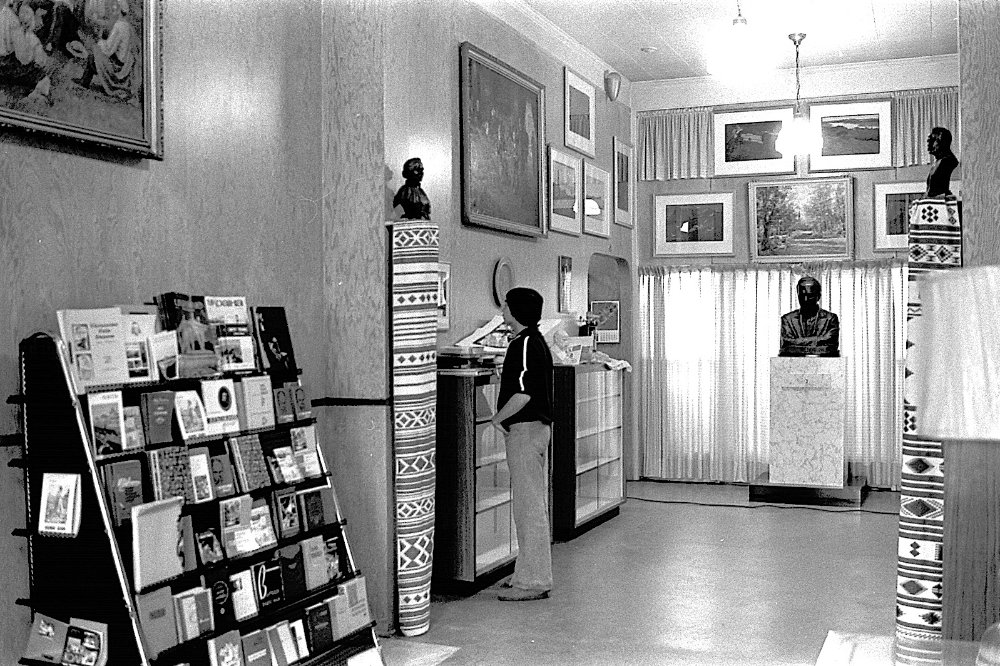
By then, the Museum had received some 500 exhibits, primarily from the Taras Shevchenko National Museum in Kyiv, Ukraine. Among them were Shevchenko’s literary works; reproductions of his paintings in oil and watercolour; sculptures; photocopies of archival documents; musical compositions based on the theme of Shevchenko; magnificent paintings representing the life and work of the great poet; cultural artifacts such as embroidered and woven textiles, wood carvings, and ceramics. All were displayed within four rooms occupying approximately 2000 square feet along with tools, farming implements, and handicrafts made by pioneer settlers.
Over the following decades, the Museum received visitors from Canada, the USA, and Ukraine as well as many other countries. Tragically, in the early hours of September 16, 1988, a fire consumed the Museum, destroying everything except the bronze death mask of Taras Shevchenko.
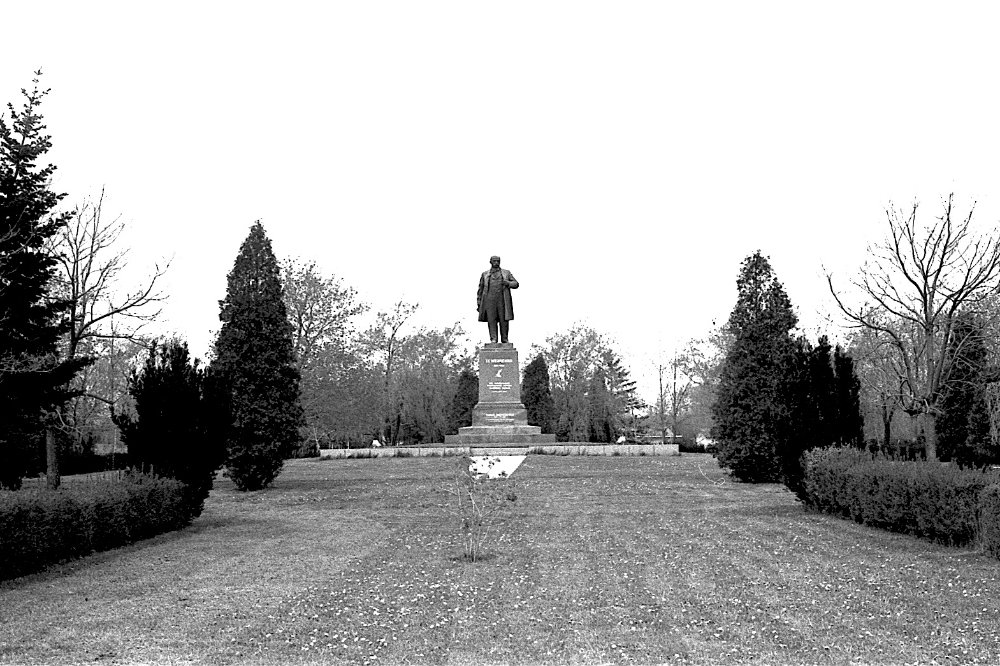
A strong determination to rebuild the Museum was supported by generous Canada-wide financial donations, the promise of rich exhibits from Ukraine, and the possibility of provincial and federal grants. Thousands of dollars were donated by friends and supporters along with hundreds of artifacts from individuals and institutions the world over. During her visit to Canada, Olga Polyanychko, then director of the Taras Shevchenko National Museum in Kyiv, generously donated thirty works of art to the Museum.
In September, 1995, the Taras Shevchenko Museum reopened at 1614 Bloor Street West in Toronto. Unique in the Americas, it has amassed collections far superior in size, quality, and variety to its original holdings, and has acquired a rare library and extensive research materials.
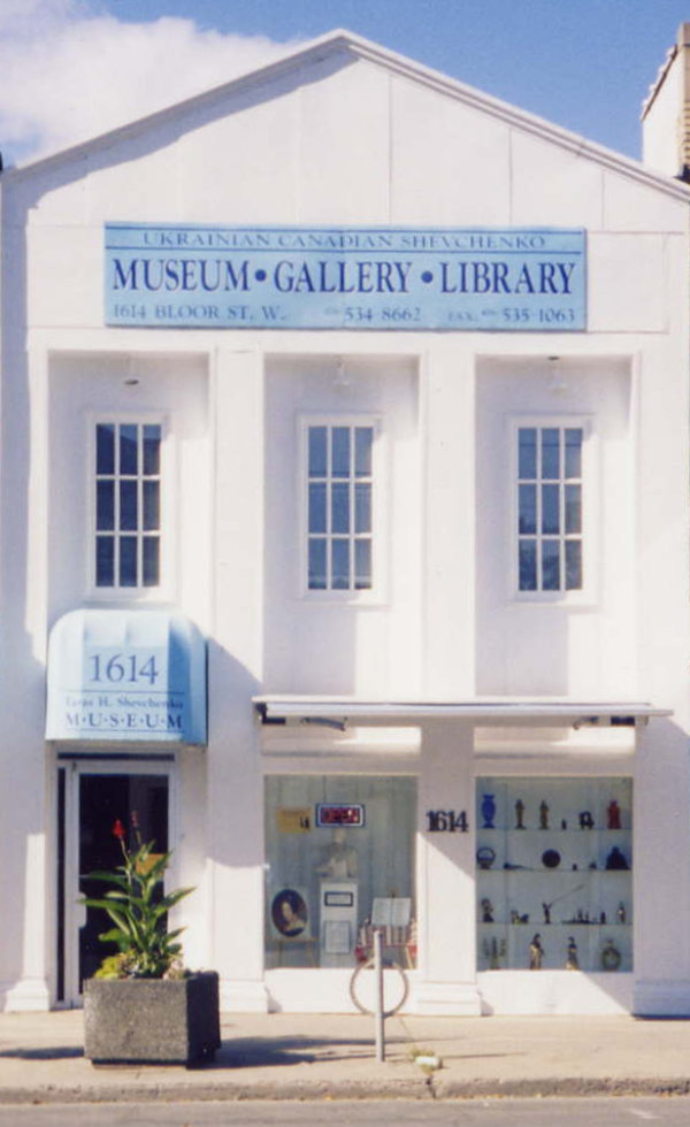
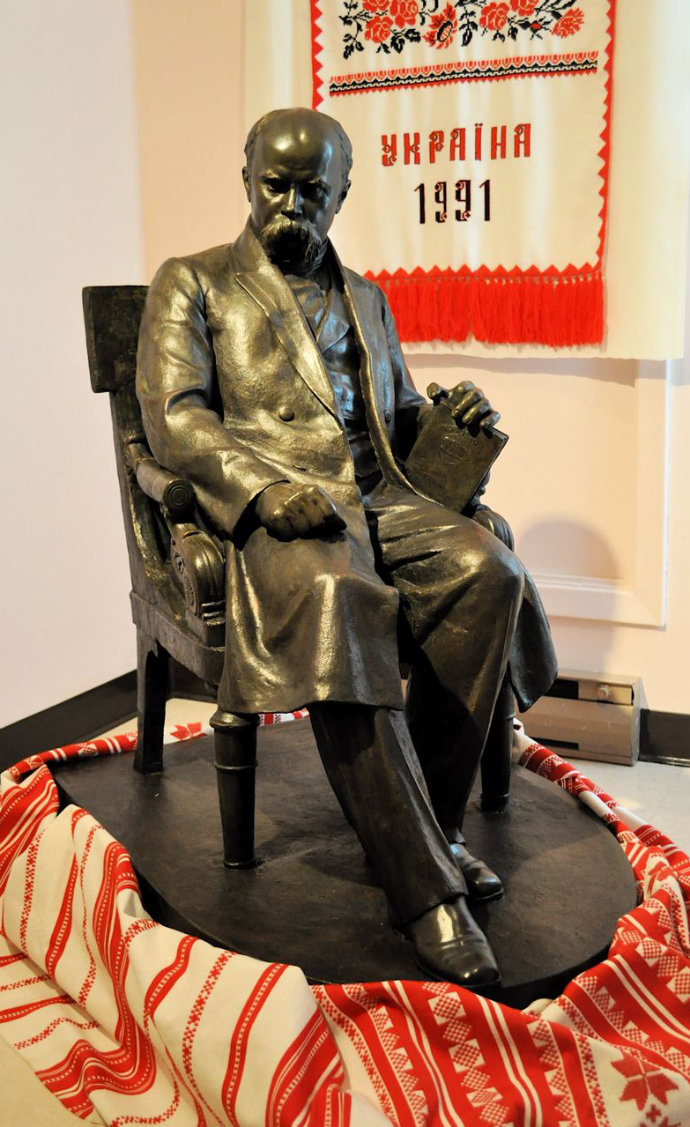
In 2006, the bronze statue of Taras Shevchenko was stolen from the Memorial Park. The head was eventually retrieved from a scrap metal foundry and is on permanent display in the Museum. The remainder of the statue was never found.
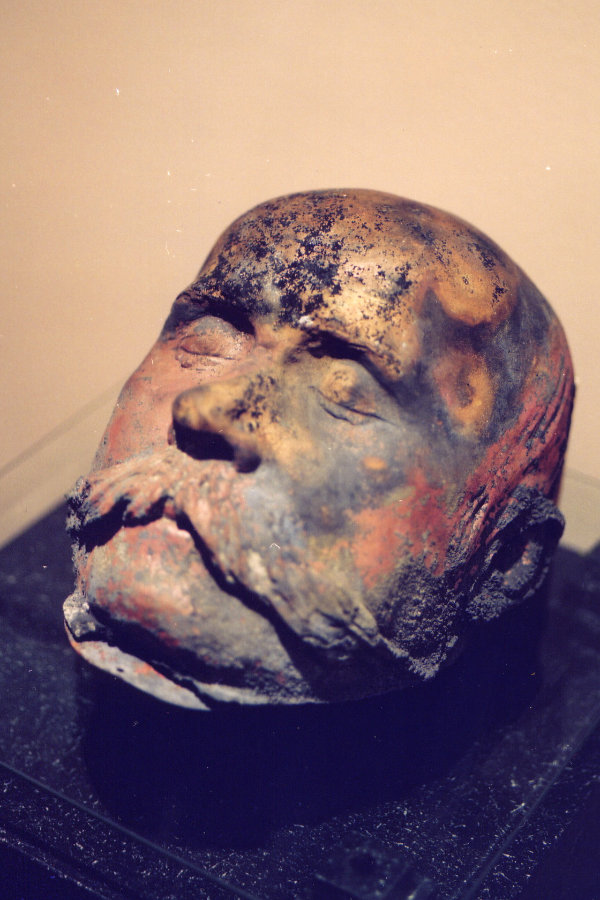
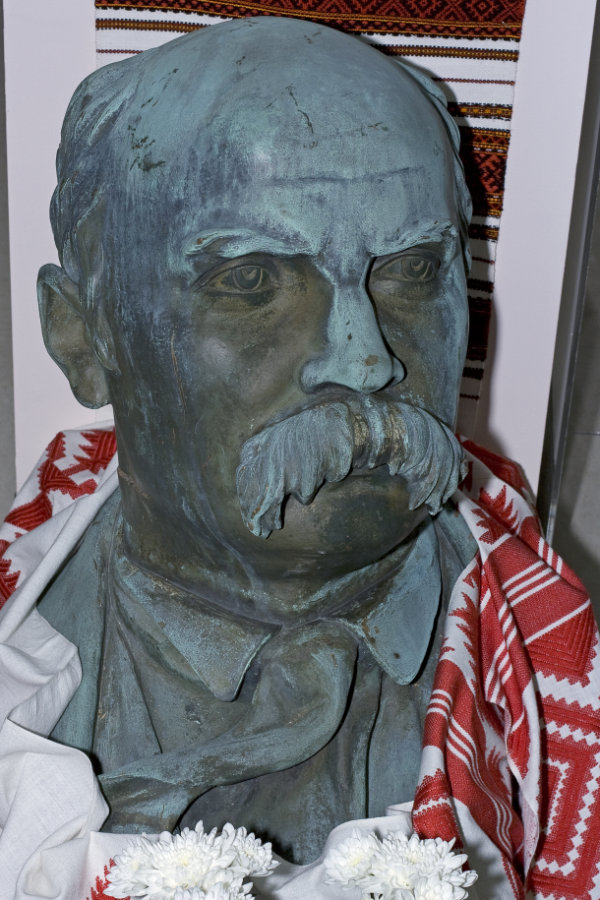
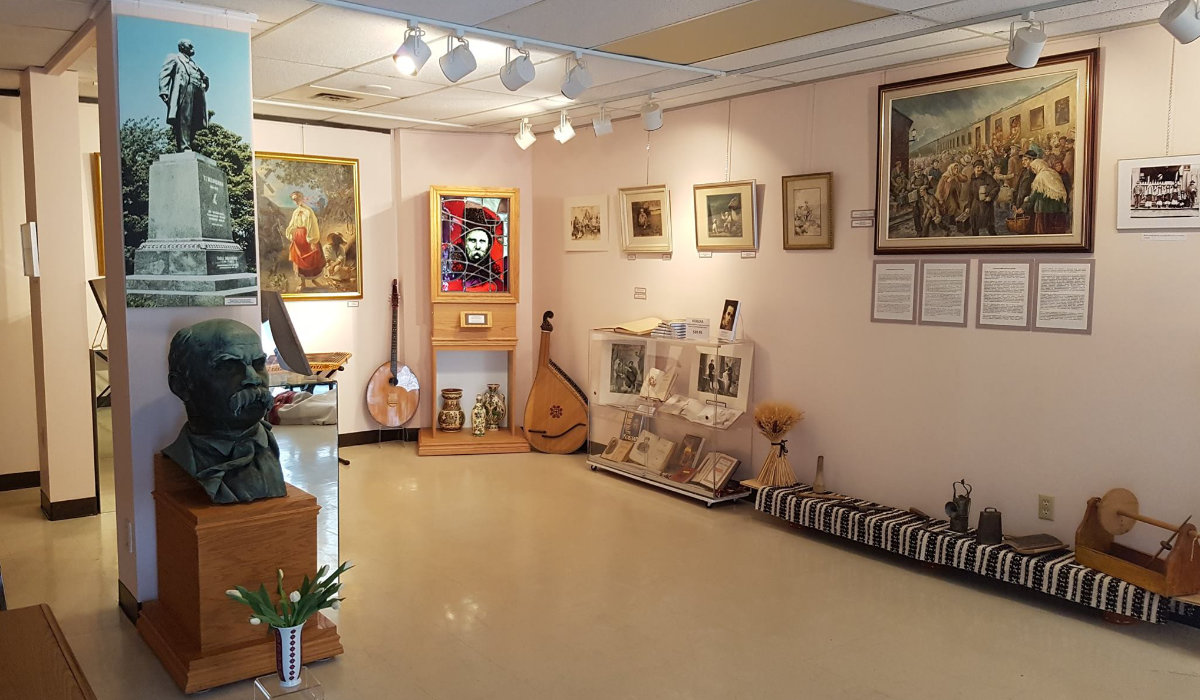
The Present
The central focus of the Museum is on the art, life and literary legacy of Taras Shevchenko. On display are various editions of his Kobzar, a small representation of the over 120 in the Museum’s collection, and a philatelic collection honouring Shevchenko. As well, the Museum houses expertly-rendered reproductions of Shevchenko's paintings, specially commissioned in Ukraine and all of professional museum quality. Donated by the Ukrainian collector David Ovcharenko, a rare Shevchenkiana book collection constitutes a valuable segment of the Museum’s ever-expanding research library and archive.
Additionally, the Museum houses works of prominent Ukrainian artists and, in its gallery, holds exhibitions of their work as well as that of contemporary Ukrainian-Canadian artists.
In keeping with its mandate to preserve and promote the history of Ukrainian immigration to Canada, the Museum holds an extensive collection of Ukrainian handicrafts and folk art, pioneer tools, farming implements, documents, and memorabilia.
To accommodate its ever-expanding collections and to better serve the public, it was decided, in 2018, to relocate the Museum to1604 Bloor Street West in Toronto. After extensive renovations, the Shevchenko Museum Gallery and Library held its grand re-opening on October 20, 2019.
The Museum’s newly-renovated facade introduces the neighbourhood to Taras Shevchenko, 19th-century poet and visionary, talented artist, and champion of peoples’ freedom.
The Museum continues to focus on Taras Shevchenko whose life and works are highlighted in the spacious and airy permanent gallery on the ground floor.
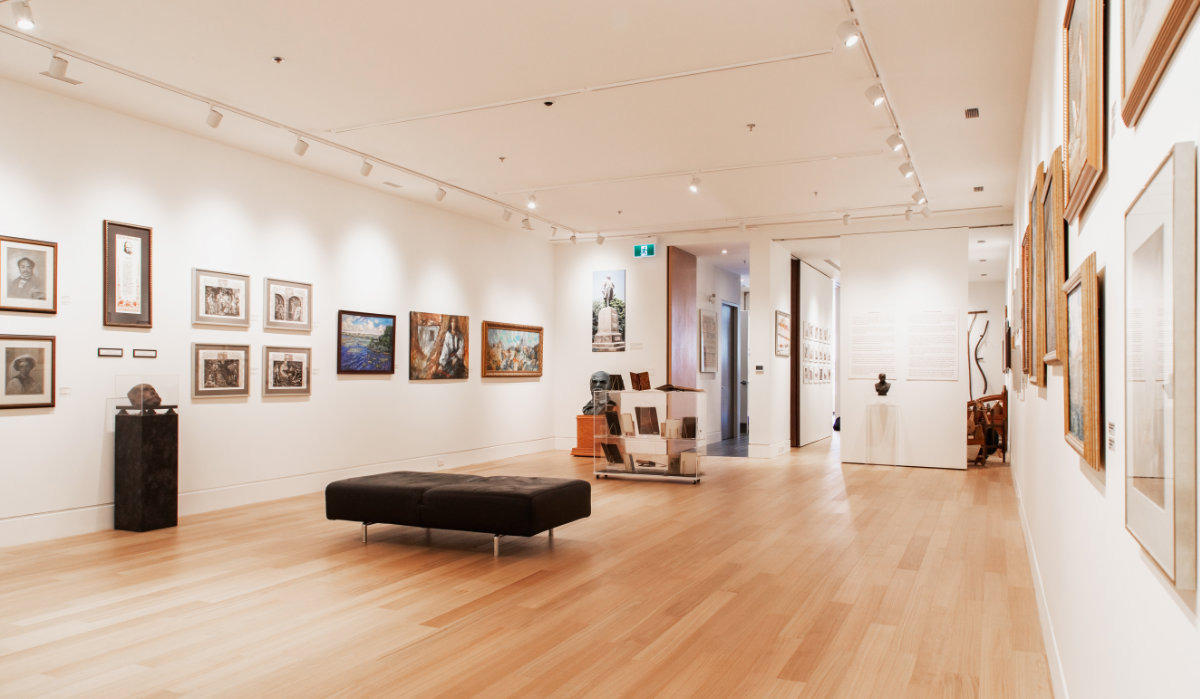
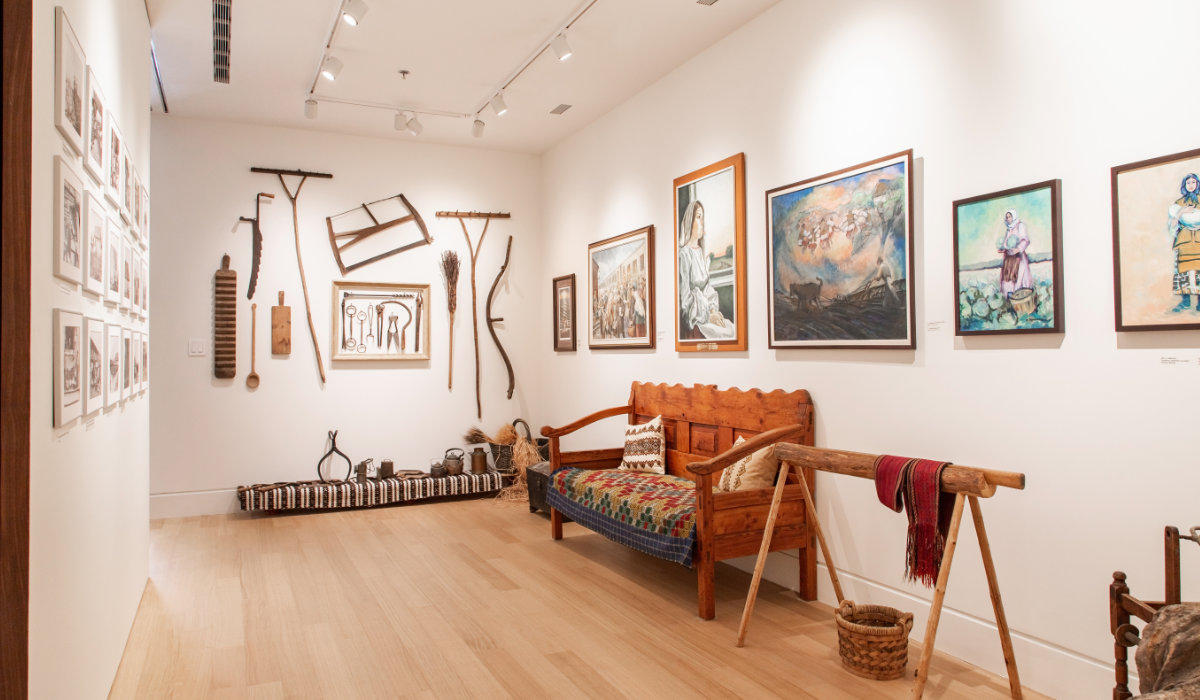
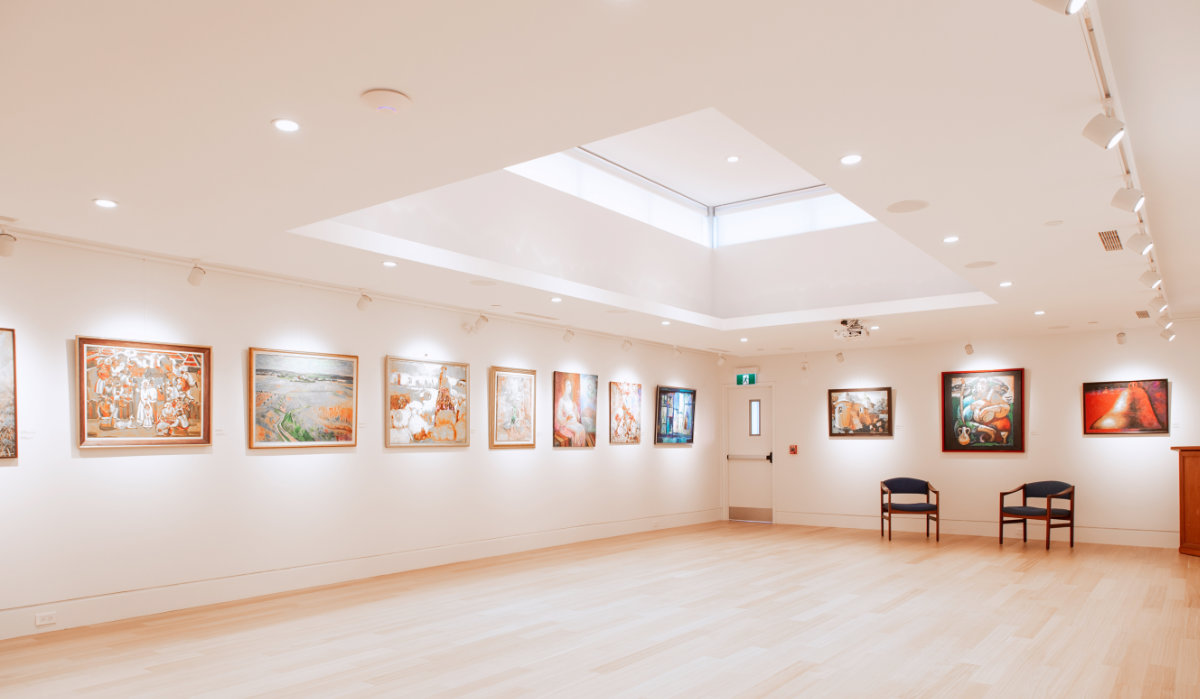
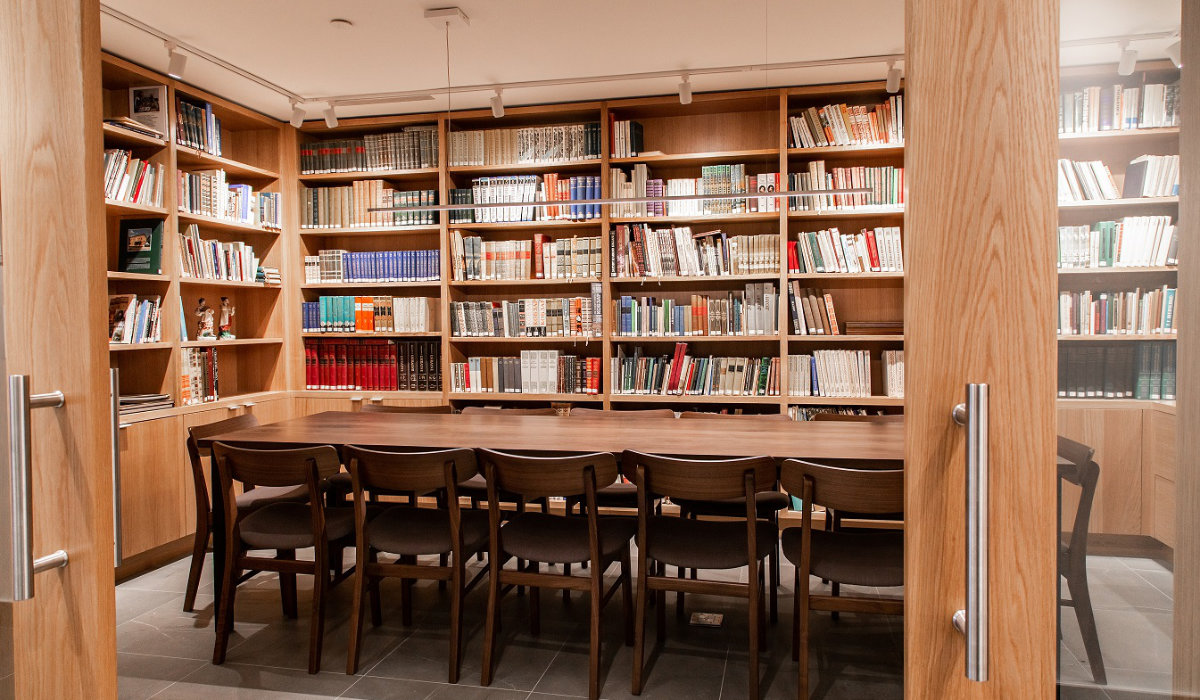
Many newly-donated items are displayed with artifacts from our previously-held collection in the enlarged heritage gallery, which has its own dedicated space.
The large, second-floor gallery functions as a space for changing displays and exhibitions by visiting artists.
The extensive Shevchenkiana research library with over 1200 volumes features copies of Shevchenko’s original poetry and prose, contemporary academic publications, books reflecting the history of his time, and works celebrating his genius.
The Museum’s permanent gallery, library and changing display areas offer an environment for academic research, exhibition of new works, and community space for arts programming, lectures, and private events.
The Shevchenko Museum strives to accommodate all visitors with English or Ukrainian- language notations and guided tours. An elevator provides convenient and easy movement between floors and the building is wheelchair accessible.
We are grateful to friends and supporters whose generous donations make it possible for us to continue sharing our rich cultural heritage with thousands of visitors from Canada and across the world.
